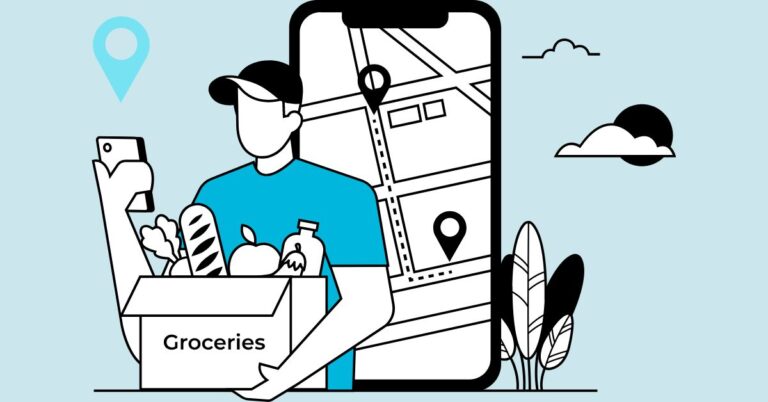Spotting Golden Chances: The Art of Identifying and Seizing Wealth-Building Opportunities
In the dynamic world of wealth creation, the ability to spot and capitalize on opportunities can be the difference between financial stagnation and explosive growth. This article will guide you through the process of developing an opportunity mindset, recognizing patterns and trends, conducting thorough due diligence, and taking calculated risks. By the end, you’ll have a practical toolkit for transforming yourself into an opportunity magnet.
The Opportunity Mindset: Your Golden Ticket
Imagine navigating life with a pair of magical glasses that reveal hidden treasures others can’t see. That’s essentially what an opportunity mindset does for you. Here’s how to develop this superpower:
- Cultivate Curiosity: Approach each day with childlike wonder. Ask questions like “Why does this work this way?” or “What if we tried it differently?” Challenge assumptions and never stop learning.
- Expand Your Network: Surround yourself with diverse groups of people. Each person you meet is a potential gateway to new opportunities. Attending industry conferences, joining professional associations, or participating in online forums.
- Immerse Yourself in New Ideas: Read voraciously across various fields, attend seminars, and listen to podcasts. Try setting a goal to read one book per month from a field outside your expertise.
Start cultivating your opportunity mindset today. What’s one question you can ask to challenge your assumptions?

Personal Anecdote: The Power of Networking
Let me share a story that illustrates the power of networking. This a real story but I change their names for privacy reasons. Last year, John decided to step out of his comfort zone and attend a local tech meetup. As a finance professional, John felt like a fish out of water among the sea of developers and startup founders.
During the networking session, John struck up a conversation with Sarah, a software developer working on an AI-driven financial app. They discussed the challenges of democratizing financial advice, and John shared insights from his experience in the finance sector.
Over the next few months, Sarah and John continued to exchange ideas. He provided feedback on her app’s financial models, while she opened his eyes to the potential of AI in financial planning. Six months later, Sarah invited me to become an early investor in her startup.
Today, John is not just an investor but also an advisor to what’s shaping up to be the next big fintech innovation. This opportunity arose not from a calculated career move, but from a willingness to explore unfamiliar territory and engage with people outside his usual circle.
The lesson? Opportunities often hide in unexpected places. By broadening your horizons and engaging with diverse groups, you increase your chances of stumbling upon golden opportunities.
Recognizing Patterns and Trends: Your Crystal Ball
Becoming adept at spotting patterns and trends is like having a crystal ball for opportunities. Here’s how to sharpen this skill:
- Develop Pattern Recognition: Start noticing similarities and differences in various situations. For example, observe how different businesses respond to economic changes or how consumer behaviors shift across industries.
- Stay Industry-Informed: Don’t just focus on your field. A trend in technology could spark an opportunity in real estate. Set up Google Alerts for key terms in industries you’re interested in, and regularly check sites like TechCrunch, Harvard Business Review, or industry-specific publications.
- Follow Thought Leaders: But don’t just passively consume. Engage, question, and connect the dots between different ideas. Follow diverse voices on platforms like LinkedIn or Twitter and participate in discussions.
- Analyze Data: Numbers tell stories. Learn to read them, and you’ll predict opportunities before they become obvious to others. Tools like Google Trends can provide insights into emerging interests and needs.

Example: Predicting the Remote Work Boom
Let’s look at how pattern recognition could have predicted the remote work boom:
- Rising real estate prices in major cities (2010-2019)
- Increasing commute times and associated stress (2015-2019)
- Advancements in communication technology (video conferencing, project management tools)
- Growing emphasis on work-life balance among millennials entering the workforce
An astute observer connecting these dots might have anticipated the shift toward remote work long before the pandemic accelerated it. This foresight could have led to early investments in companies facilitating remote work or in real estate markets benefiting from urban exodus.
Remember, you don’t need to be a genius to spot trends. You just need to be more observant and curious than the average person.
The Art of Due Diligence: Look Before You Leap
Spotting an opportunity is just the beginning. The real skill lies in evaluating its potential. Here’s your due diligence toolkit:
- Research Thoroughly: Dive deep into company financials, market conditions, and competitive landscapes. Use resources like annual reports, industry analyses from firms like McKinsey or Deloitte, and financial databases like Bloomberg or Yahoo Finance.
- Seek Expert Opinions: But remember, even experts can be wrong. Use their insights as part of your decision-making process, not as the sole determinant. Attending expert webinars, and reading analyst reports, but always cross-reference information.
- Assess Risk-Reward: Every opportunity comes with risks. The key is understanding if the potential reward justifies those risks. Create a simple risk-reward matrix for each opportunity.

Case Study: The Importance of Due Diligence
Consider the case of Theranos, once heralded as a revolutionary blood-testing startup. Many investors, including high-profile individuals, poured millions into the company without thoroughly vetting its claims. Had they conducted proper due diligence – checking the feasibility of the technology with independent experts, and demanding to see verified test results – they might have avoided significant losses.
On the flip side, early investors in Amazon who did their homework saw the potential of e-commerce despite the company’s initial losses. They recognized Amazon’s innovative approach to inventory management and its potential to disrupt multiple industries.
The lesson? Thorough due diligence might seem time-consuming, but it can save you from costly mistakes and help you identify truly transformative opportunities.
Taking Calculated Risks: The Leap of Faith
All the research in the world won’t eliminate risk. At some point, you need to take the plunge. Here’s how to do it smartly:
- Start Small: Test the waters with a small investment. Scale up as you gain confidence and see results. This could mean buying a few shares of a stock you’re interested in or starting a side business with minimal initial investment.
- Have an Exit Strategy: Know when to cut your losses or take your profits before you even start. Set clear benchmarks for both scenarios.
- Never Overextend: The golden rule of investing – never risk more than you can afford to lose. This applies to time and energy as much as money.
Case Study: Sarah’s Real Estate Win
Sarah, a marketing executive, always wanted to invest in real estate but was intimidated by the market. Here’s how she approached it:
- Research: She spent six months studying the local real estate market, attending property auctions, and networking with local real estate agents.
- Start Small: She identified an up-and-coming neighborhood and purchased a small, affordable rental property.
- Risk Management: Sarah ensured she had enough savings to cover mortgage payments for six months even without rental income.
- Continuous Learning: She joined a local real estate investors group and regularly attended workshops to improve her property management skills.
Two years later, her property value has increased by 30%, and she’s earning a steady rental income. The key to her success? Starting small, doing her homework, being willing to learn from both successes and setbacks, and most importantly, taking that initial calculated risk.

Practical Application: The Opportunity Challenge
Ready to put these ideas into action? Here’s your 30-day Opportunity Challenge:
- Start an Opportunity Journal: Each day, write down one potential opportunity you’ve noticed. This could be anything from a gap in the market for a product or service to a skill that’s in high demand.
- Weekly Deep Dives: Choose one opportunity from your journal each week and spend an hour researching it thoroughly. Look into market size, competition, potential risks, and rewards.
- Expand Your Network: Attend at least one networking event or join an online community in a field you’re curious about. Set a goal to have three meaningful conversations at each event.
- Trend Analysis: Pick an industry you’re interested in and spend 30 minutes each week tracking key trends. Use tools like Google Trends or industry reports.
- Skill Building: Identify a skill that could help you capitalize on opportunities (e.g., data analysis, public speaking) and spend 15 minutes each day developing it.
Connecting to the F.R.E.E.D.O.M Framework
This approach to opportunity identification aligns perfectly with the WealthSolo F.R.E.E.D.O.M Framework:
- Flexibility in exploring diverse fields and ideas
- Resourcefulness in identifying opportunities in unexpected places
- Education to understand and evaluate these opportunities
- Efficiency in conducting thorough due diligence
- Discipline in following through with your opportunity challenge
- Opportunities – the very focus of this article!
- Mindset shift to see possibilities where others see obstacles
Conclusion: Your Opportunity Awaits
Remember, the ability to spot and seize opportunities isn’t a mystical talent bestowed upon a lucky few. It’s a skill that can be developed and honed over time. By cultivating curiosity, expanding your knowledge base, and being willing to take calculated risks, you’re setting yourself up to catch the next wave of wealth-building opportunities.
So, put on your opportunity glasses and start seeing the world differently. Your next big break could be just around the corner. Don’t wait – start your Opportunity Challenge today. Write down the first opportunity you notice, no matter how small. Remember, every business empire started with a single idea. Are you ready to seize yours?
Recommended Books on Spotting Opportunities and Building Wealth
Zero to One by Peter Thiel – Provides insights on how to find unique opportunities and build something new
Blue Ocean Strategy by W. Chan Kim and Renée Mauborgne – Teaches how to create uncontested market space and make the competition irrelevant.
The Innovator’s Dilemma by Clayton M. Christensen – Explores how successful companies can stay ahead of the curve by identifying and seizing new opportunities.
The Art of Possibility by Rosamund Stone Zander and Benjamin Zander – Helps readers reframe their thinking to see new possibilities and opportunities.
Author Bio:
Garnet is actively working to achieve financial freedom. As the author of and founder of WealthSolo, Garnet Smith is passionate about empowering others to take control of their financial futures through education and actionable strategies.







